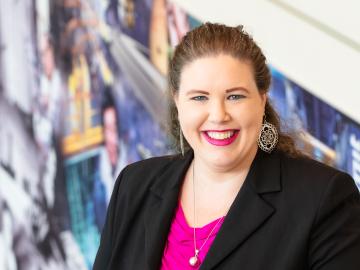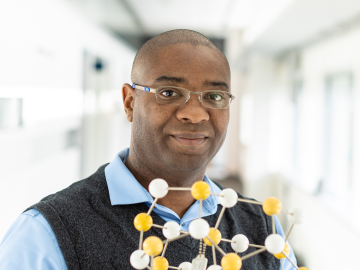
Filter News
Area of Research
- Advanced Manufacturing (6)
- Biology and Environment (34)
- Clean Energy (50)
- Climate and Environmental Systems (3)
- Computational Engineering (2)
- Computer Science (4)
- Electricity and Smart Grid (1)
- Functional Materials for Energy (2)
- Fusion and Fission (8)
- Fusion Energy (5)
- Isotopes (7)
- Materials (52)
- Materials Characterization (2)
- Materials for Computing (9)
- Materials Under Extremes (1)
- Mathematics (1)
- National Security (9)
- Neutron Science (33)
- Nuclear Science and Technology (15)
- Nuclear Systems Modeling, Simulation and Validation (1)
- Quantum information Science (1)
- Supercomputing (18)
News Type
News Topics
- (-) Clean Water (13)
- (-) Coronavirus (15)
- (-) Cybersecurity (9)
- (-) Environment (58)
- (-) Isotopes (14)
- (-) Machine Learning (12)
- (-) Materials (68)
- (-) Neutron Science (41)
- (-) Nuclear Energy (35)
- (-) Physics (10)
- (-) Security (4)
- 3-D Printing/Advanced Manufacturing (49)
- Advanced Reactors (18)
- Artificial Intelligence (21)
- Big Data (20)
- Bioenergy (21)
- Biology (24)
- Biomedical (15)
- Biotechnology (3)
- Buildings (25)
- Chemical Sciences (22)
- Climate Change (29)
- Composites (13)
- Computer Science (56)
- Critical Materials (13)
- Decarbonization (12)
- Energy Storage (47)
- Exascale Computing (4)
- Frontier (4)
- Fusion (17)
- Grid (24)
- High-Performance Computing (23)
- Hydropower (6)
- Irradiation (3)
- ITER (4)
- Materials Science (53)
- Mathematics (1)
- Mercury (3)
- Microscopy (20)
- Molten Salt (6)
- Nanotechnology (24)
- National Security (10)
- Net Zero (2)
- Partnerships (7)
- Polymers (14)
- Quantum Computing (6)
- Quantum Science (14)
- Simulation (12)
- Software (1)
- Space Exploration (11)
- Statistics (1)
- Summit (8)
- Sustainable Energy (54)
- Transformational Challenge Reactor (1)
- Transportation (47)
Media Contacts

Shih-Chieh Kao, manager of the Water Power program at ORNL, has been named a fellow of the American Society of Civil Engineer’s Environmental & Water Resources Institute, or EWRI.

Nonfood, plant-based biofuels have potential as a green alternative to fossil fuels, but the enzymes required for production are too inefficient and costly to produce. However, new research is shining a light on enzymes from fungi that could make biofuels economically viable.

Anne Campbell, an R&D associate at ORNL, has been selected for an Emerging Professional award from ASTM International. ASTM, formerly the American Society for Testing and Materials, is an international standards organization that develops and publishes voluntary consensus technical standards for a wide range of materials, products, systems and services.

For decades, scientists sought a way to apply the outstanding analytical capabilities of neutrons to materials under pressures approaching those surrounding the Earth’s core.

Valentino “Tino” Cooper, a scientist at ORNL, has been appointed to DOE’s Basic Energy Sciences Advisory Committee for a three-year term. Cooper’s research elucidates the fundamental understanding of advanced materials for next-generation energy and information technologies.

Andrew Lupini, a scientist and inventor at ORNL, has been elected Fellow of the Microscopy Society of America.

Marm Dixit, a Weinberg Distinguished Staff Fellow at ORNL has received the 2023 Rosalind Franklin Young Investigator Award.

Oak Ridge National Laboratory scientists exploring bioenergy plant genetics have made a surprising discovery: a protein domain that could lead to new COVID-19 treatments.

A new report published by ORNL assessed how advanced manufacturing and materials, such as 3D printing and novel component coatings, could offer solutions to modernize the existing fleet and design new approaches to hydropower.

Warming a crystal of the mineral fresnoite, ORNL scientists discovered that excitations called phasons carried heat three times farther and faster than phonons, the excitations that usually carry heat through a material.


